Mark Knight and Dog Whistling
by Wholesome Rage | 18 September 2018
Recently, this comic was published by a major Australian newspaper:
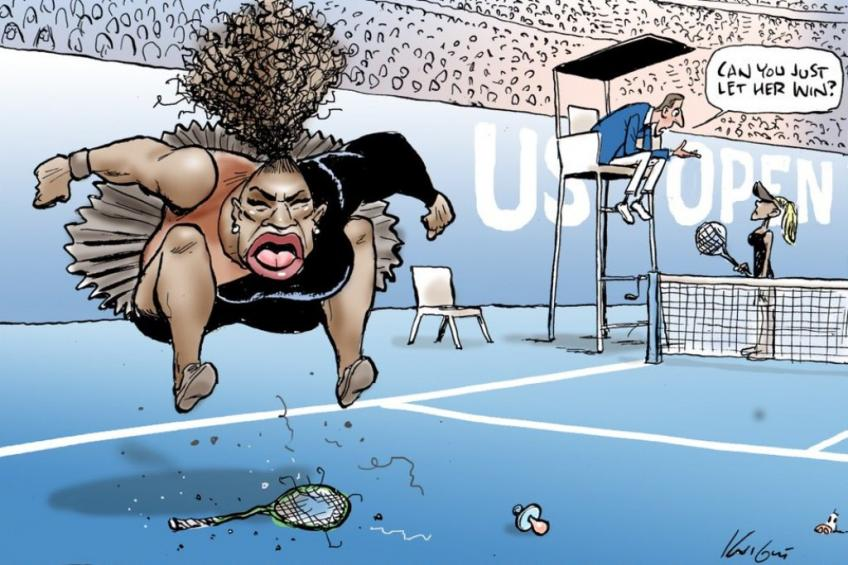
Mark Knight is the author, that’s his signature in the bottom corner of the screen.
Obviously, it’s racist.
Or, not obviously, apparently. When the author came out as saying it wasn’t intentionally racist, there was a lot of handwringing.
On Australia’s subreddit, this seemed to be a common consensus of the issue:
I don’t know what to think anymore. I’ve always thought lampooning everyone equally was ok. I’ve never been on this side before and it feels weird. I don’t agree that just because an artistic style was used in a racist context in the past that it somehow means we can never again use it in the future.
And yes, I’ve been told that the depiction itself was somehow racist, but everyone that’s told me that also seems to think it’s a caricature of all black people instead of just Serena in a bad moment.
Happy to be proven wrong, though.
The issue gets reframed about an issue of lampooning, of cartooning. It’s definitely the direction Mark Knight himself took it:
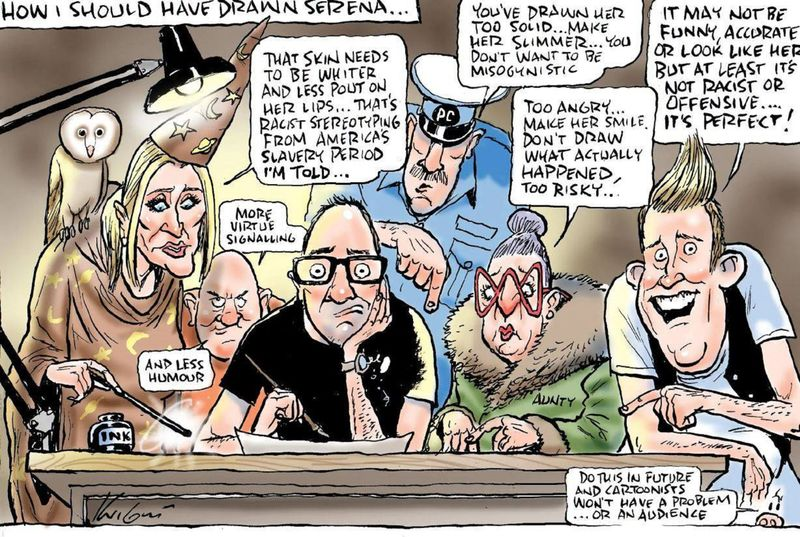
“I need to do this to be funny, and have an audience”.
I’m going to interrogate the specific points he brings up in this in a moment, but first I think it’s important to explain the concept of ‘dog whistling’. Dog whistling is when you say or do something that gets picked up by your target audience for what it is — in this case, racism — but goes over most people’s heads.
Worst of all, it makes the people who are trained to listen to dog whistles and call them out look like idiots, or the “PC Police”.
The point of lampooning is you exaggerate the characteristics of a person you think are most relevant or distinctive for comedic purposes, sure. The original drawing reduced her to racial characteristics.
What it was implying was that the most relevant characteristics about the character throwing a temper tantrum was their race.
There’s more elements here, though. Take for instance, her opponent, shown as a rail-thin, blonde, white woman. Now, she had a blonde ponytail in the match, sure, but here’s how she actually looked:
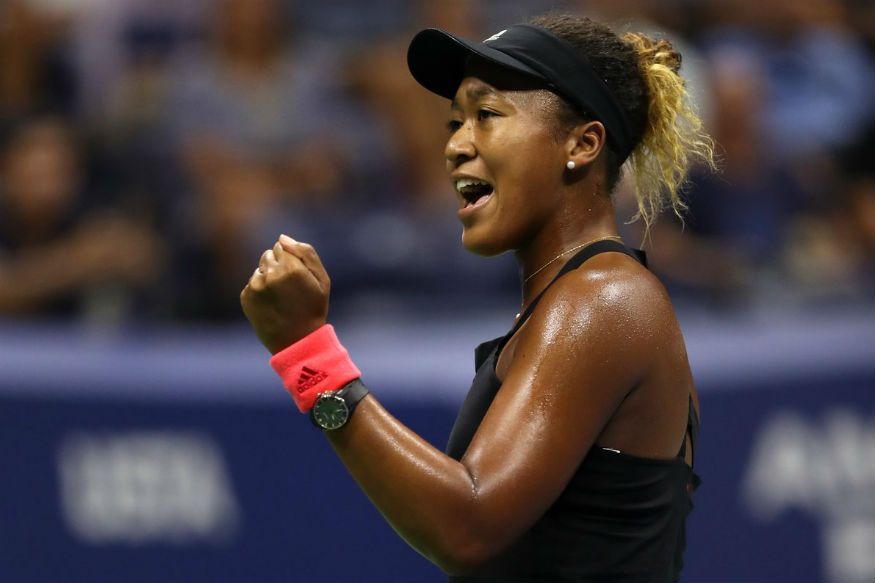
The umpire, pale pink in the comic as well, was Carlos Ramos. That means that in a scene depicting three people-of-colour, the only one drawn in a way depicting that was the one having a temper tantrum.
The subtext then should be pretty clear; “Yes, this is just how those people are”
Here’s what happened when I tried to explain that to the original commenter above and, again, his thoughts on this seemed to be the more popular take:
My issue with this response is that it’s entirely predicated on your assumption that it’s specifically a racist caricature, and not just a caricature of Serena Williams as an individual. Nobody is saying “all black people look like that” or somehow implying they’re inferior in the comic, because that’s insanity. You’ve not even considered the option that your initial assumption for your argument could possibly be wrong.
FWIW the artist has come out and said that it wasn’t intended as racism. All your argument does is make it extremely convenient to assume that he was racist, so you can dismiss it out of hand.
The artist has come out and said it wasn’t intentionally racist. But would racists honestly lie about their racism? A bigger problem I find is that a lot of racists don’t think of themselves as racist. It’s just, if you look at the statistics, it’s true.
But I’ve already I’ve already written about that before.
So let’s look at why it’s convenient to ask the artist what they meant, instead of interrogating their past work. They’re a long running editor cartoonist, this work doesn’t exist in a vacuum:
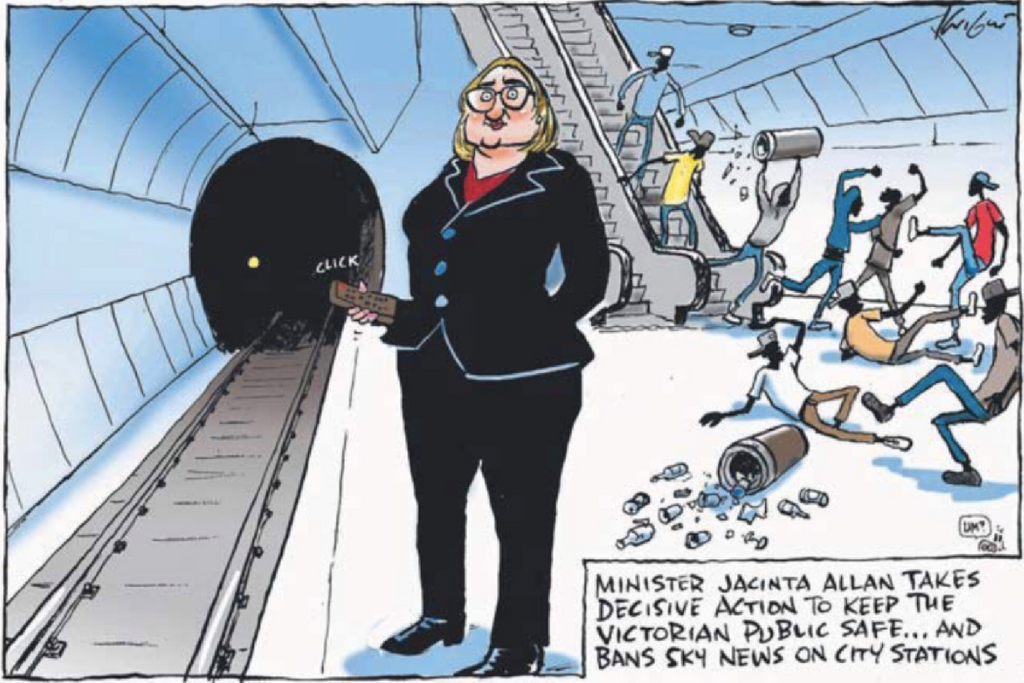
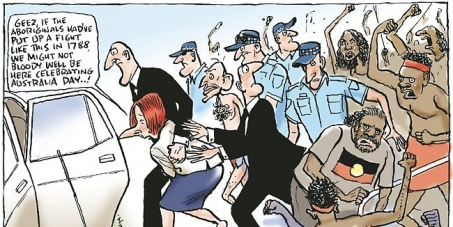
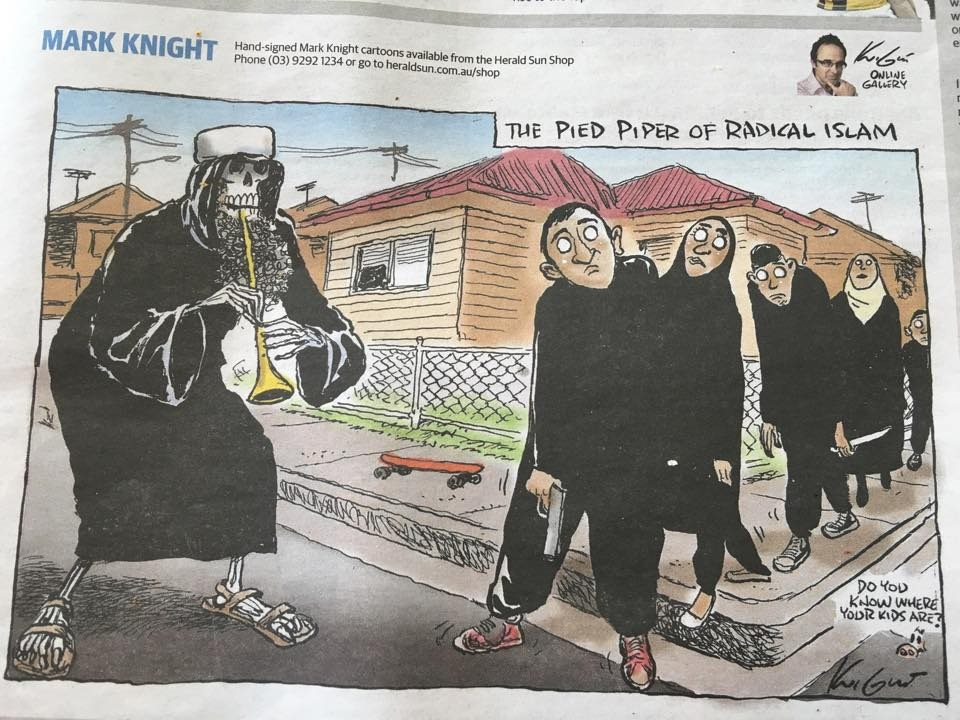
But we are supposed to take his word in good faith that the Serena comic wasn’t intentionally racist.
But let’s go back and identify the criticism he chose to single out for his rebuttal comic, spoken by various figures leaning over his shoulder:
- “Needs more virtue signalling”
- “Less humour”
- “That’s racist stereotyping, I’m told“
- “Drawn her too solid, that’s misogynistic”
- “Too angry, you don’t want to draw what really happened, that’s risky“
- “If I do this I won’t have a problem, or an audience”
So let’s look at how these criticisms look based on how he’s framed them, and what that framing conveys. You might want to tune your ears a little for the high-pitch frequency.
He’s acknowledged that the art style is Jim Crow, stylistically. It might not quite be TinTin in the Congo, but the wide hips and thick lips trace their origins from the same roots.

However, he ends this admission not with culpability — I could see how that might be offensive — but with the accuser saying; I’m told. The person criticizing him doesn’t actually believe this themselves, they’re more worried about how it might look. It absolves the artist of his ‘accidental reference’. They don’t know any better, either.
The fact that it portrays a black person in a negative light and alludes to a time where they had less civil rights is a problem for more than just how it appears. It’s not just an outdated visual – it’s important because of what the intent behind that art style was.
“Less humour” – The real problem, Mark Knight implies, is that he was trying to make a joke. Unfortunately this effectively works out to; “If I wasn’t saying it seriously, you’re not allowed to take it seriously“. It’s a really effective get-out-of-jail-free-card to people who want to believe that racism is a ‘solved problem’, because it means that there isn’t a real problem, it’s just these other people trying to make you feel bad. I understand the appeal because, until recently, I was one of those people. But it’s not a binary: Either off or on. It’s more like a volume knob. It reflects a cultural background noise that not be audible to you.
Then you have the “too angry” criticism as it’s portrayed. Now, as I said above, the real issue was drawing the only distinct non-white character in the comic as having anger issues, and white-washing the other real-life figures to highlight this. But the real issue I take with this is it’s framed as; “You don’t want to draw what actually happened“. Two conclusions usually get drawn from this line of argument:
It doesn’t matter if it’s racist, as long as it’s _true.
To not be racist requires _lying _about these issues.
This is another dog whistle. It’s true that a lot of people will make these conclusions, but they’re not a guaranteed conclusion to make. By pointing out this implication, the accuser is the person who has made these conclusions explicit. This is most often where “the real racists are the anti-racists” rhetoric comes from.
“Too risky“, the same character mutters, because Mark Knight sees himself as being the brave truth-teller. Urban Dictionary provides a great word for this.
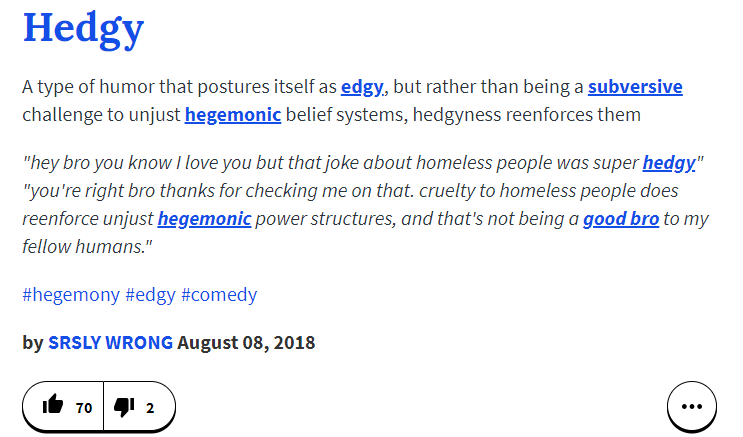
I don’t have anything especially deep or insightful to say about the “solid” line for the misogyny framing. He didn’t draw her as muscular, he drew her as fat. “Solid” is a very convenient phrasing for that, to lead into the ‘slimmer’ counterargument – notably how he drew her opponent, who has a similar build to Serena. And, again, skin tone.
Finally: “More virtue signalling”. Possibly the most popular brand of dog whistle in use.
The sound this one makes goes; “The people criticizing me don’t actually care about these issues. They just want to be seen caring about these issues.” It denies the existence of empathy. Everyone who tries to tell you that empathy exists for more than just the people you directly know? They’re lying. You’re fine. They’re pompous and pretentious.
Fuck their Ivory Towers.
There’s a reason this one is so effective. It’s commonly used against Liberals. Their policing of language and tone is quite often classist. It’s heavily used against the poor and those who can’t access the educational institutions that the criticizer had access to. It can appear, especially coming from people like Rowling who is depicted in the comic, to be hypocrisy at its finest.
It’s effective because it can be true.
But empathy does exist and racism isn’t a solved issue.
Dog whistling is a real problem, because it’s meant to be invisible. Someone pointing it out to you might seem crazy. It might look like an attempt to call something racist without providing ‘convincing’ proof.
I want to thank Mark Knight of being a good example of how this works, then. When you can look at his past work and see the context of the man claiming he didn’t really mean to make it look racist, you can then look at how he depicts the ‘real’ threat on Melbourne trains, and what he thinks of the 2012 Aboriginal protest – a protest where the Aboriginals were plainly dressed, not just in more tribal garb or shirtless as depicted.
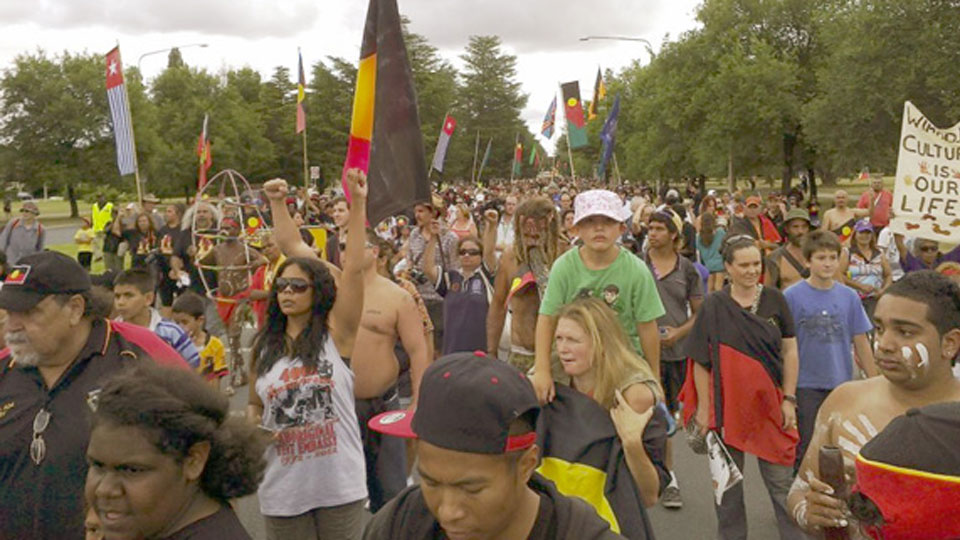
Looking at this photo you can see that some were as he depicted. The man in the center is. But how well does this photo match up to the brown smear you see in the comic above? Another dog whistle – “What was wrong with just drawing Aboriginal people?” was the common reply to that one being called racist.
There’s a knee-jerk reaction by many that when something is pointed out as racist, if they didn’t see it as racist… it feels like a personal attack. If you didn’t see what’s racist about it, then it feels like they’re accusing you of being racist as well.
This ends up with a lot of people defending the work as not-racist. They’re not really trying to argue that it’s not racist, they’re trying to argue why they think they’re not racist.
That’s kind of the point of dog whistling in a way. To get the non-racists to sanitize your racism, by being overt enough your message gets through, but subtle enough you have plausible deniability. You’re not going to be the one who does the denying, anyway.
If you’re curious about how and why this works when the examples aren’t quite as clear-cut as Mark Knight here then The Alt-Right Playbook, by Innuendo Studios, goes into tactics like these in great depth, and are also very entertaining. They’re a truly valuable resource.